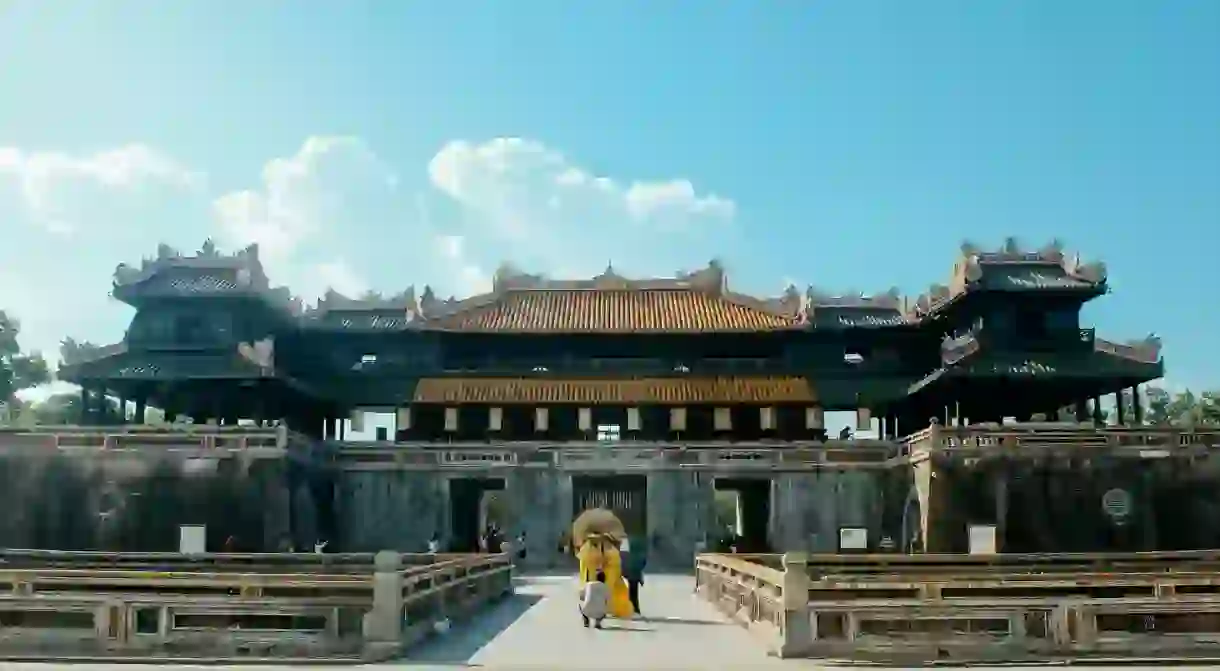Beautiful Photos of Hue, Vietnam's Lost Imperial City

From 1802 to 1945, Hue was the capital of Vietnam and home to the Nguyen dynasty. After the Vietnam War, Hue’s unique history fell to ruin as the imperial era wasn’t viewed favourably by the communist authorities. These days, however, the temples and landmarks of the city are national treasures, attracting millions of visitors every year.
Looking for a unique trip to Vietnam? Book yourself onto Culture Trip’s exclusive 12-day Vietnamese adventure, spanning the night markets of Hanoi and the lantern-lit streets of Hoi An, guided by a Local Insider.
The Citadel
By far the focal point of tourism in Hue, the Citadel is a sprawling complex on the northern side of the Perfume River, and within its deep moat and imposing walls are the courts, temples, gardens and pavilions of the Imperial City.

Meridian Gate
For most, this gate – also known as the South Gate – will be where you start your tour of the Imperial City. It was built in 1833 by emperor Minh Mạng and was used as a place from which to view ceremonies and troop movements. The five entrances you can see in the photo below are sized according to the status of the person allowed to enter through them: the middle and largest was for the emperor; the two smaller ones off the centre were for mandarins, soldiers and horses; and the two arched entrances facing inward were for the common people.


Hien Nhon gate
This gate is the eastern entrance into the Imperial City.


To Mieu Temple
In 1823, the emperor Minh Mạng wanted to build a temple in tribute to the previous nine rulers of his dynastic line, which is why there are nine tripod cauldrons around the courtyard in front of To Mieu temple. The temple itself is modelled on the Imperial Ancestral Temple, or Taimiao, in Beijing.





Purple Forbidden City
Following the Tet Offensive in 1968, a division of the People’s Army of Vietnam, or Viet Cong, occupied Hue, including the Imperial City. At first, the US was reluctant to bomb the historic sites, but when casualties began to mount, they changed their policy. Of 160 original buildings, only 10 remained after the Battle of Hue. Most of the Purple Forbidden City, where the emperor lived, was destroyed, and you can still see many bullet holes in the walls. The original structures were modelled on the Chinese Forbidden City in Beijing.






Co Ha Gardens
These gardens, located in the northeast corner of the Imperial City, were built by the first four emperors of the Nguyen dynasty. For many years, they fell into disrepair, but a restoration project has brought them back to their former glory. You really feel like royalty when you stroll through this opulent area.



Hue Museum of Royal Antiquities

This newly renovated museum houses artefacts from the dynastic years, such as garments, ceramics and works of art.













